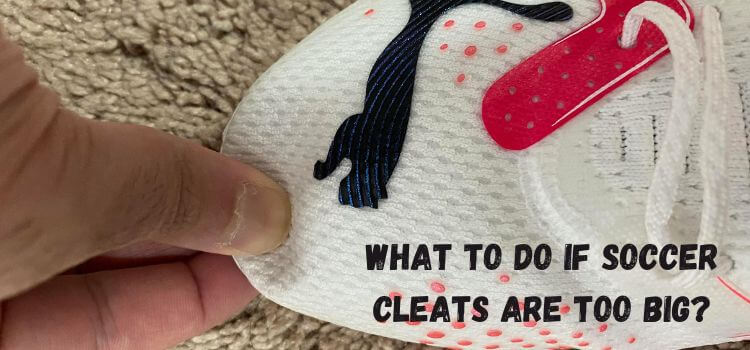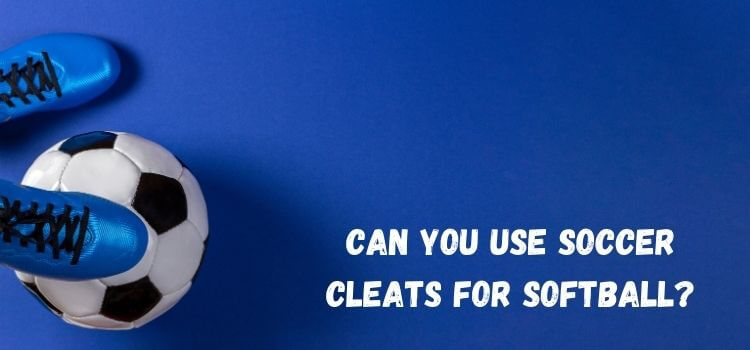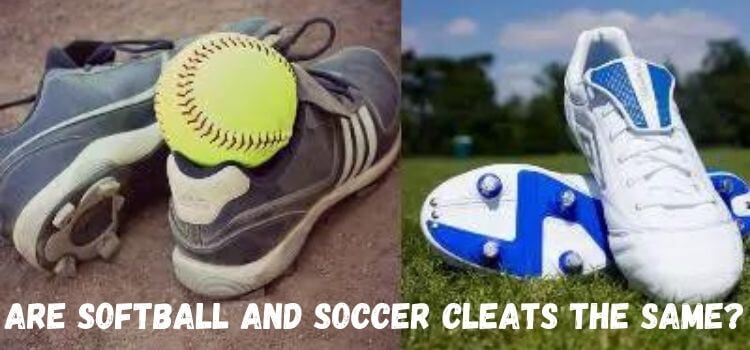As an Amazon Associate, I earn from qualifying purchases
Soccer is a game of precision, agility, and control, and having the right gear is crucial for optimal performance on the field. One of the most critical equipment for any soccer player is their cleats. However, even with careful selection, soccer cleats can become too big, causing discomfort and hindering performance. In this article, we’ll explore what to do if soccer cleats are too big and you find yourself in this situation.

Signs that Soccer Cleats Are Too Big
Before diving into solutions, it’s essential to identify if your soccer cleats are too big. Here are some common signs to look out for:
Blister Formation
One of the telltale signs of ill-fitting cleats is the formation of blisters on your feet. This occurs when there is excessive rubbing and friction due to the extra space within the shoe.
Frequent Slipping
If your feet are sliding inside your cleats, it indicates they are too big. Running or making quick movements on the field can result in instability and a lack of control.
Lack of Control
Properly fitting cleats provide stability and support, giving you better control over the ball. If you feel like you’re struggling to maintain control or execute precise movements, it could be due to oversized cleats.
Methods to Adjust Loose Soccer Cleats
In the case of too-large soccer cleats, there are a few remedies you can try:
Wearing Thicker Socks
One quick fix is wearing thicker socks to fill up some extra space inside the cleats. This can provide a tighter fit and reduce slippage.
Using Insoles
Inserting insoles or orthotic inserts into your cleats can help fill up excess space and provide additional cushioning and support.
Tightening Laces Properly
Ensuring you lace up your cleats tightly can also help minimize movement within the shoe. Focus on securing the midfoot and heel areas for a snug fit.
DIY Remedies for Loose Soccer Cleats
In addition to the above methods, there are some DIY remedies you can try:
Using Heel Grips
Applying heel grips or pads to the inside of your cleats can prevent your heels from slipping and rubbing against the back of the shoe.
Adding Padding
If certain areas of your cleats feel too spacious, add padding using materials like foam or moleskin to create a better fit.
Considerations When Purchasing Soccer Cleats
The following factors must be considered when purchasing soccer cleats to avoid this problem in the future:
Importance of Trying On Before Buying
Always try on cleats before purchasing to ensure the perfect fit. Depending on the brand and even the model, sizes can vary.
Understanding Different Brands’ Sizing
Be aware that sizing may differ between brands, so it’s essential to refer to each manufacturer’s size chart and consider any specific recommendations they provide.
Conclusion
Ill-fitting soccer cleats can be a frustrating obstacle for any player, but it’s possible to find a solution with the right approach. When you recognize the signs of oversized cleats, you can make the necessary adjustments to ensure maximum comfort and performance.
Frequently Asked Questions (FAQs)
Many retailers offer exchanges or returns within a specific timeframe if the cleats are unworn and in their original condition.
Purchasing cleats that fit snugly from the start is generally recommended, as excessive space can lead to discomfort and instability.
The lifespan of cleats can vary depending on usage and care, but a general rule of thumb is to replace them every season or after approximately 300-500 miles of wear.
Some brands offer cleats with wider fits or adjustable features to accommodate players with wider feet.
Yes, wearing too-tight cleats can lead to discomfort, blisters, and even more severe issues like ingrown toenails or stress fractures. An ideal fit should strike a balance between comfort and snugness.
Read Our More Articles
- How Long Do Soccer Cleats Last? Get the Facts Here
- What Soccer Cleats Run Wide: A Comprehensive Guide
- Who makes wide soccer cleats? Selection Guide
As an Amazon Associate, I earn from qualifying purchases


